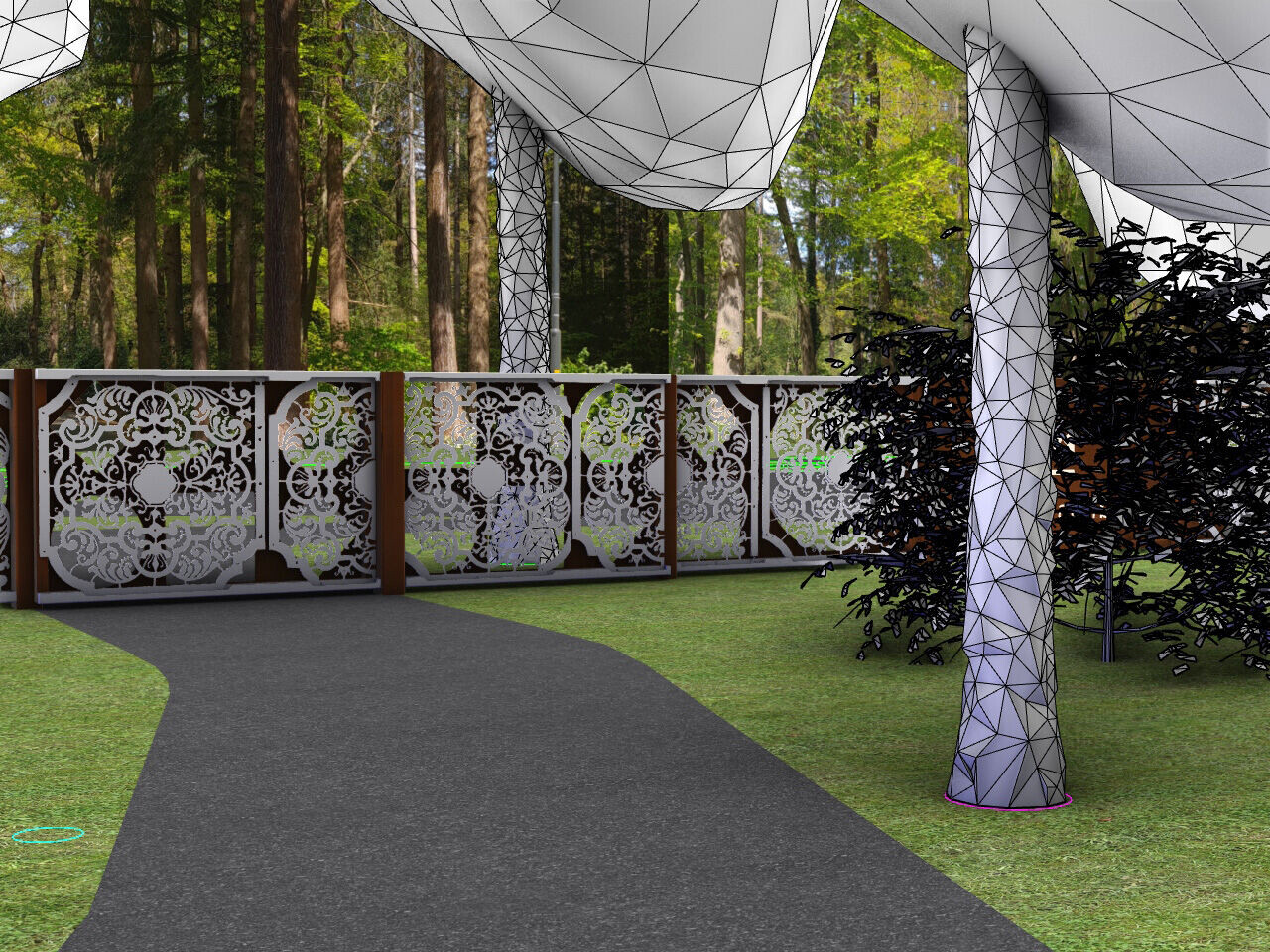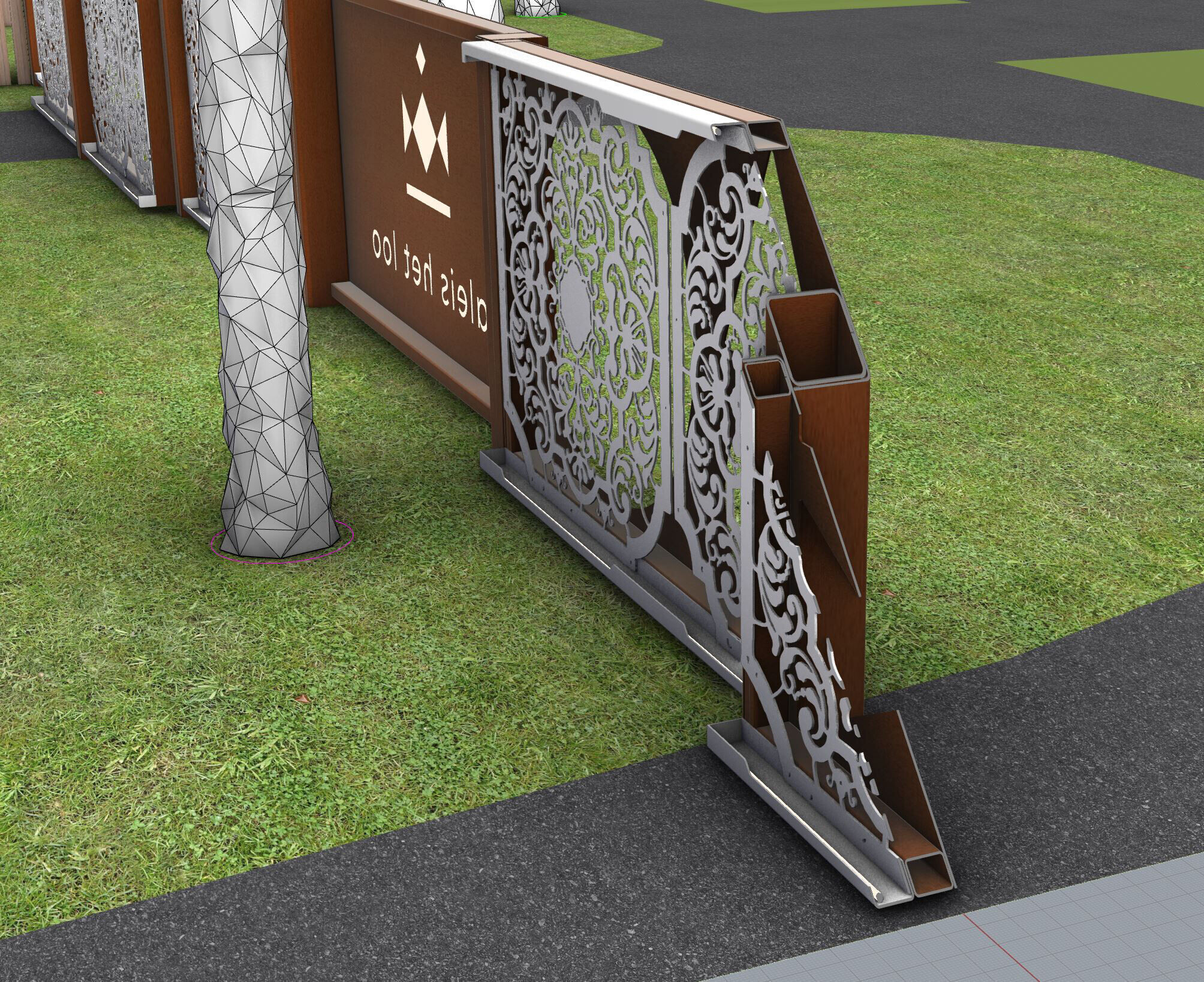Paleis Het Loo is a palace in Apeldoorn, the Netherlands, built by the House of Orange-Nassau between 1684 and 1686 for the stadtholder-king William III and Mary II of England.
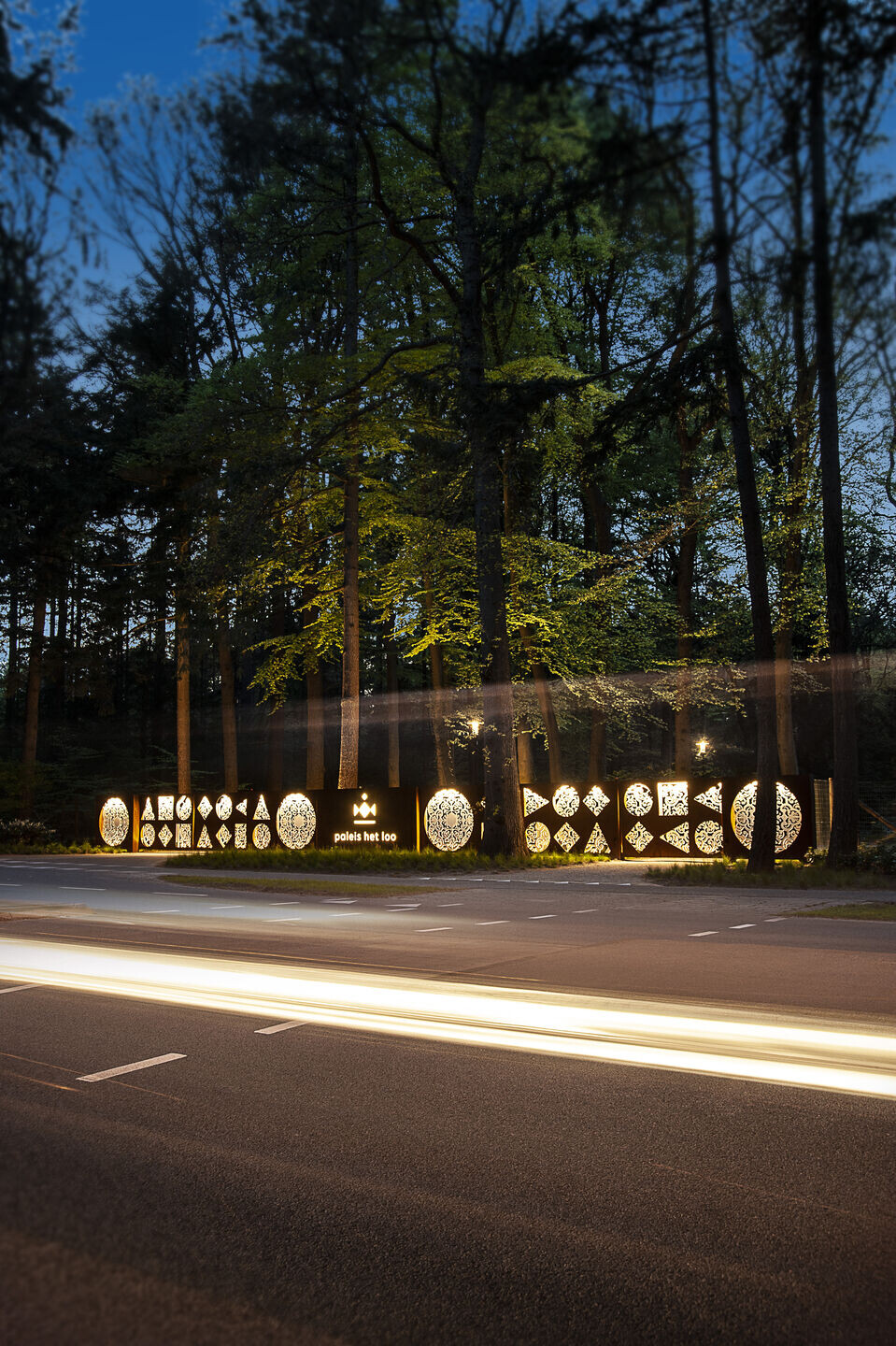
The project, including design, production oversight and project management, was delivered turn-key by Tjep. in April 2023; the pre-selection phase was organised/curated by ACEC in Apeldoorn.
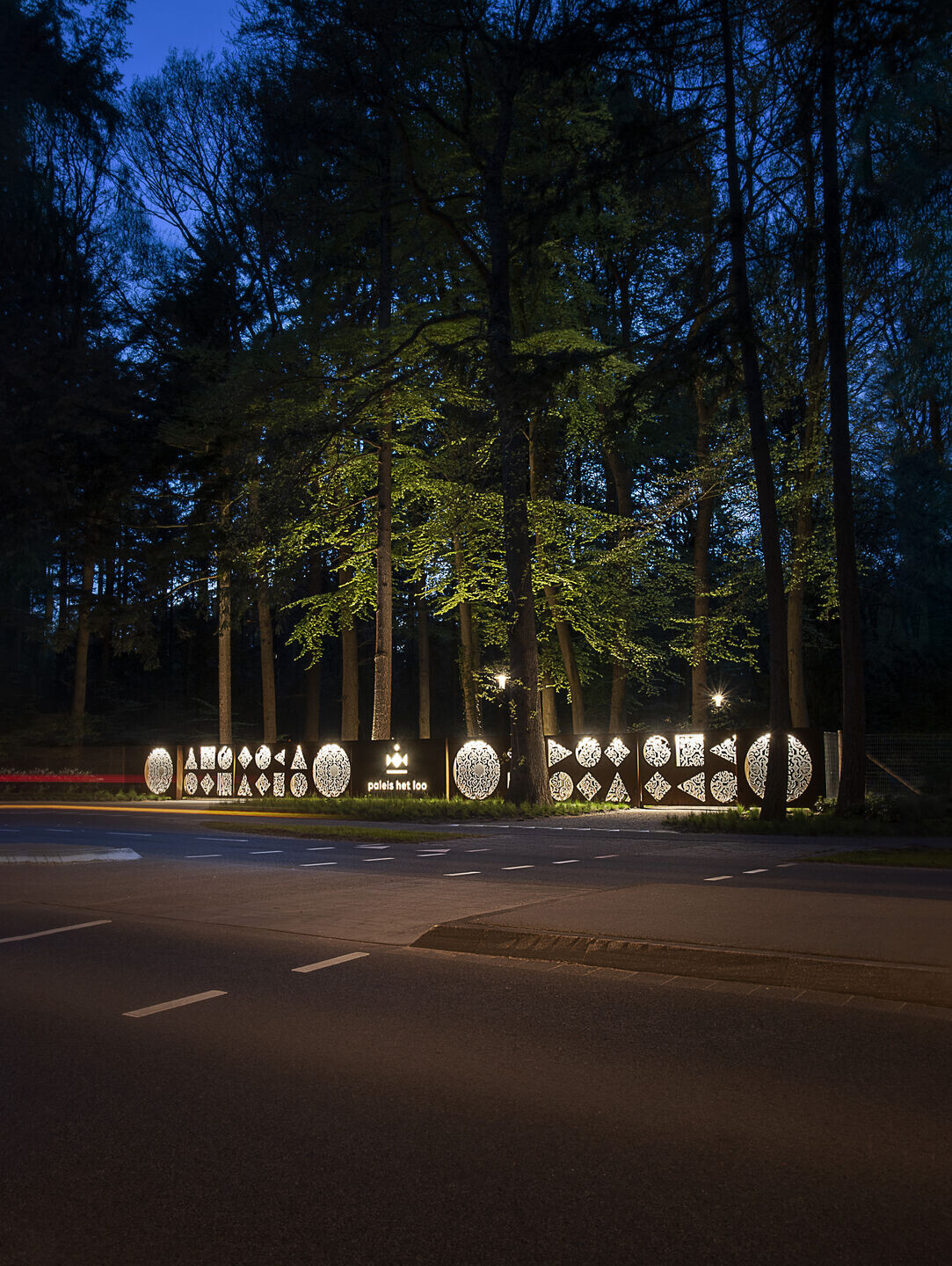
Smolenaers BV was responsible for realisation and placement.
‘Palace Het Loo is a link between history, culture and emotion.’ This sentence from the briefing became the basis for Tjep's design proposal. Daniel Marot’s garden design for Paleis Het Loo, like the gardens of Versailles by Le Notre, stands for man's domination over nature. Today we prefer to speak of man in harmony with nature. We see the new entrance of Paleis Het Loo as a portal from our modern age to the classical age, but above all, a place where a fusion of the present and the past takes place.
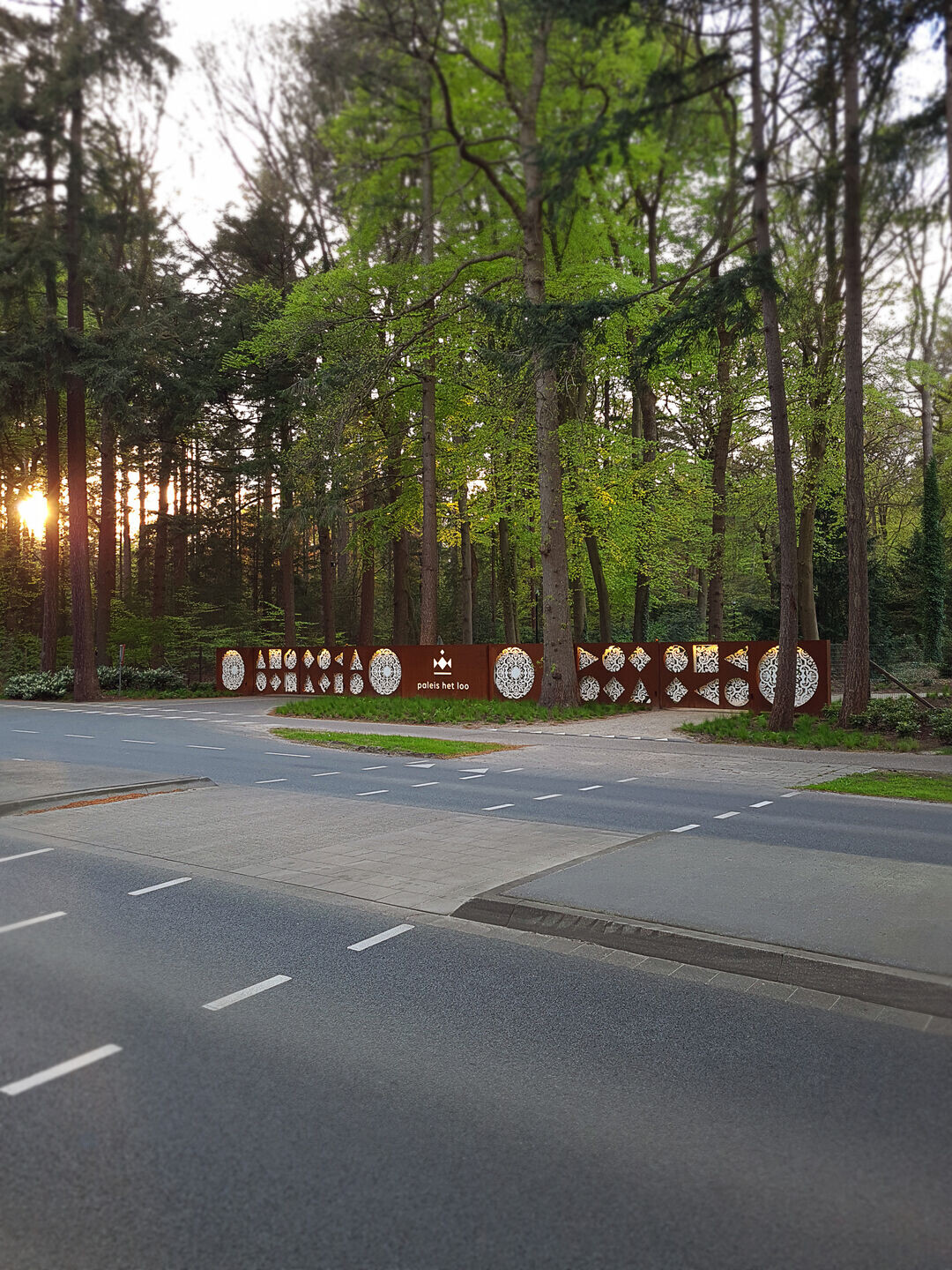
Present and past are symbolised in the design proposal in two layers. The outer layer facing the main road contains a pattern of basic modern geometric shapes some of which can be found in the logo of Het Loo. It offers vistas to a second layer; here, we find a baroque pattern from the gardens of the Loo. Due to the downscaling of the garden pattern, the second layer has a filigree quality that links the elegant patterns in the gardens to the sophistication of baroque lace that can be found in portraits in the interior of Paleis Het Loo.

The proposed entrance gate has a rough, strong outer layer made of Corten steel and a fragile-looking white inner layer, this also symbolizes preservation care that we should devote to cultural heritage and the nature on which it was inspired. The new entrance gate literally invites you to look at classical history from a contemporary perspective.
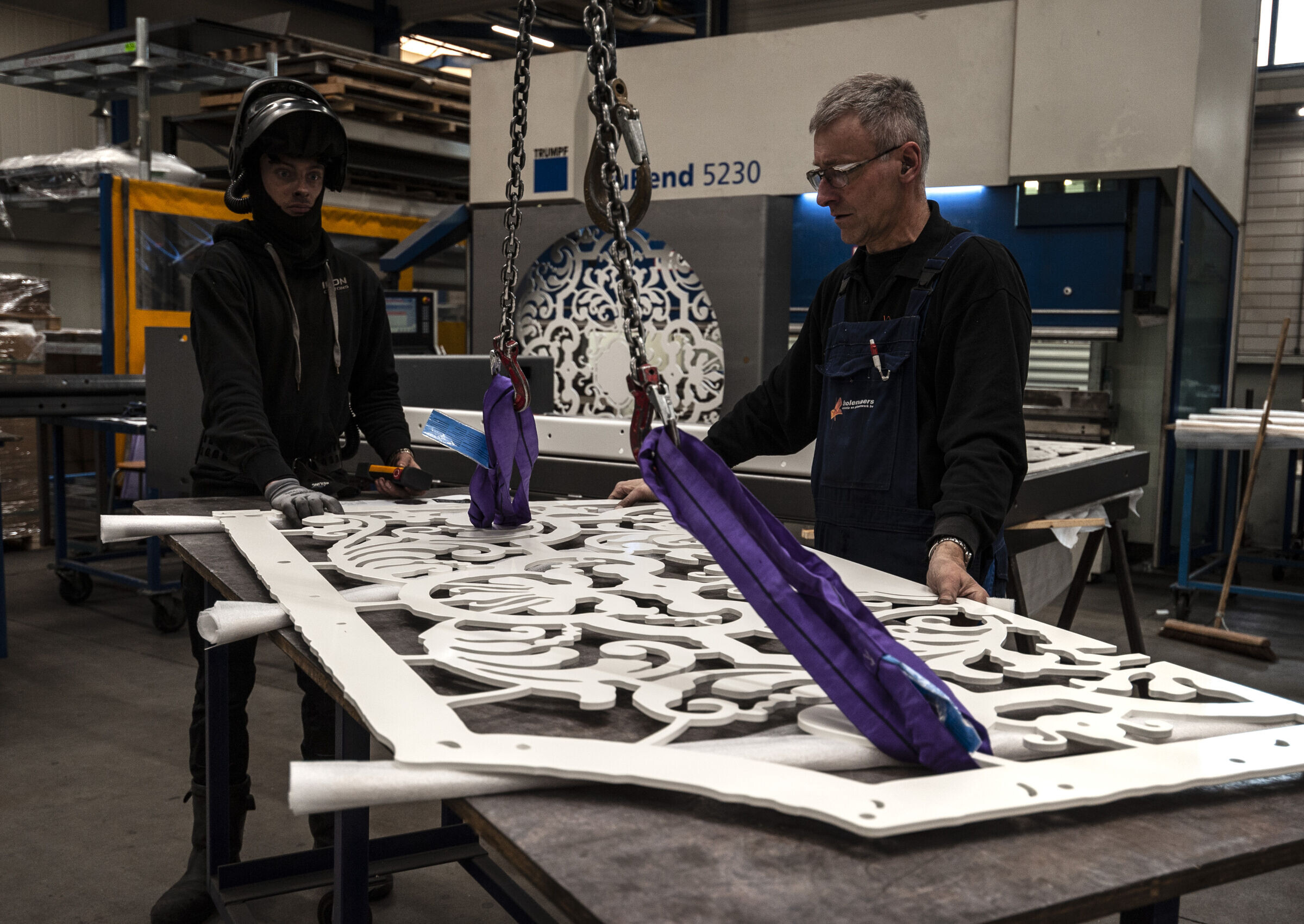
Dimensions: 25 meters wide, 2 meters high, over 9 tons in weight and more than 200 components constitute the object.
